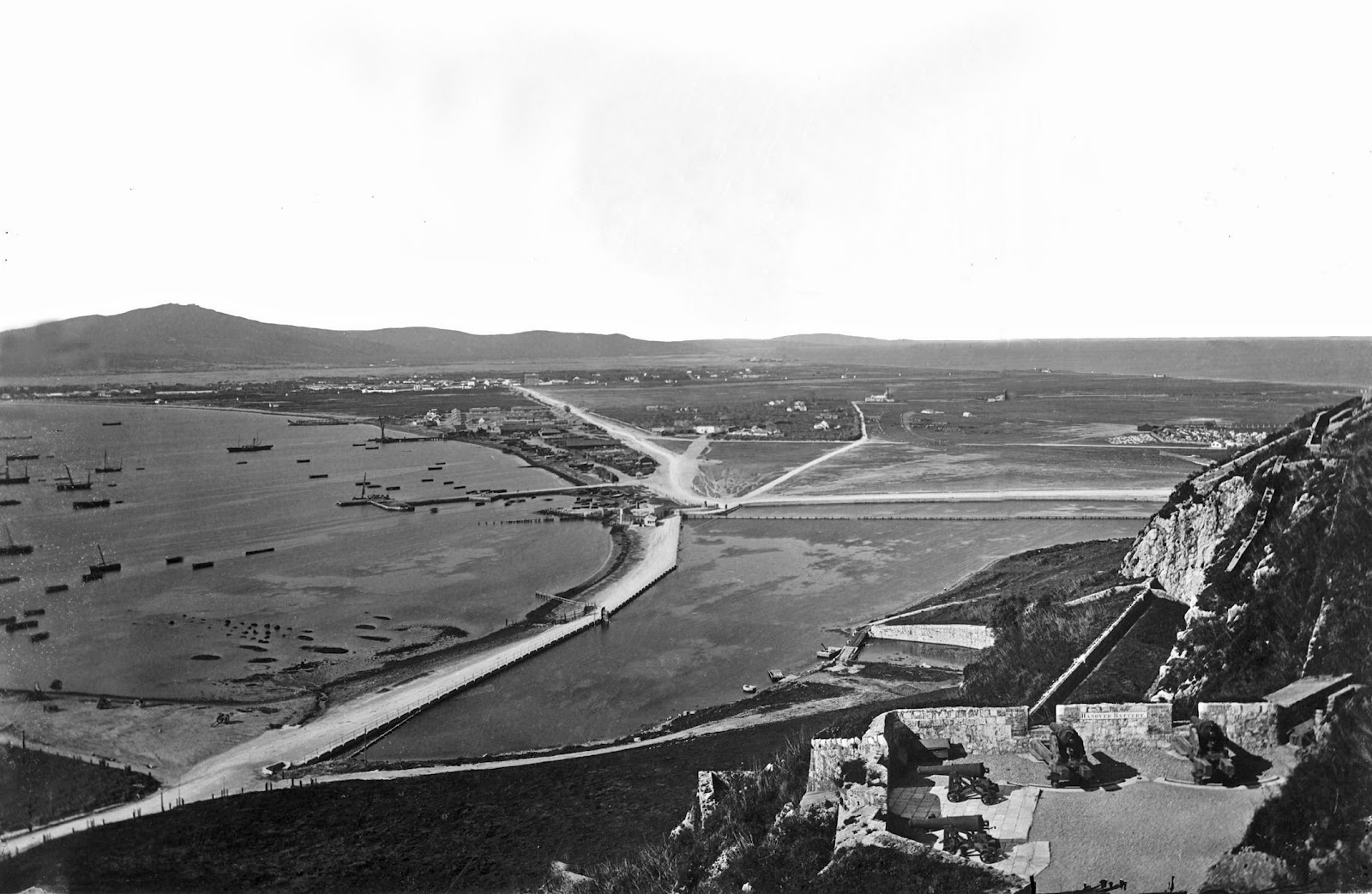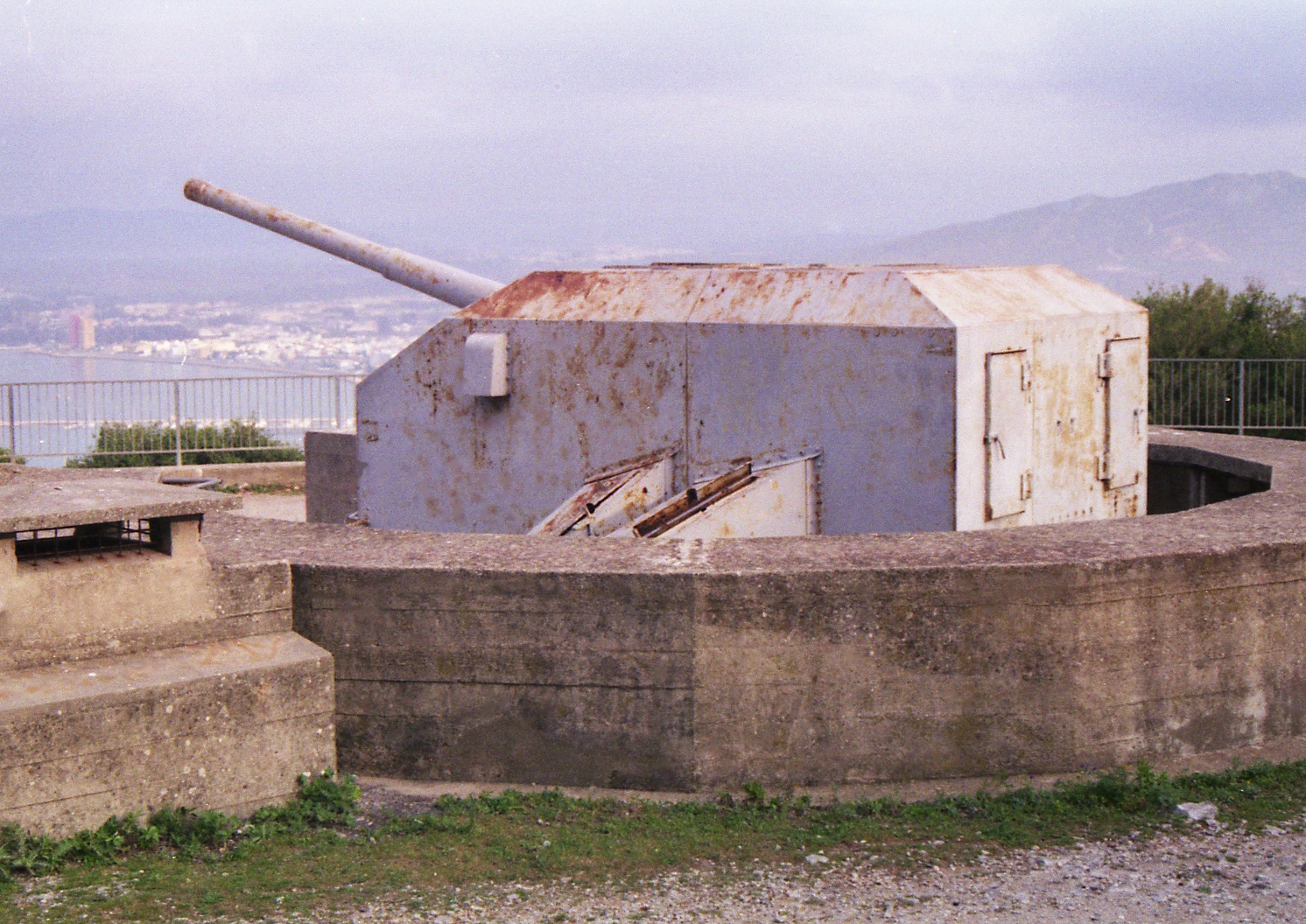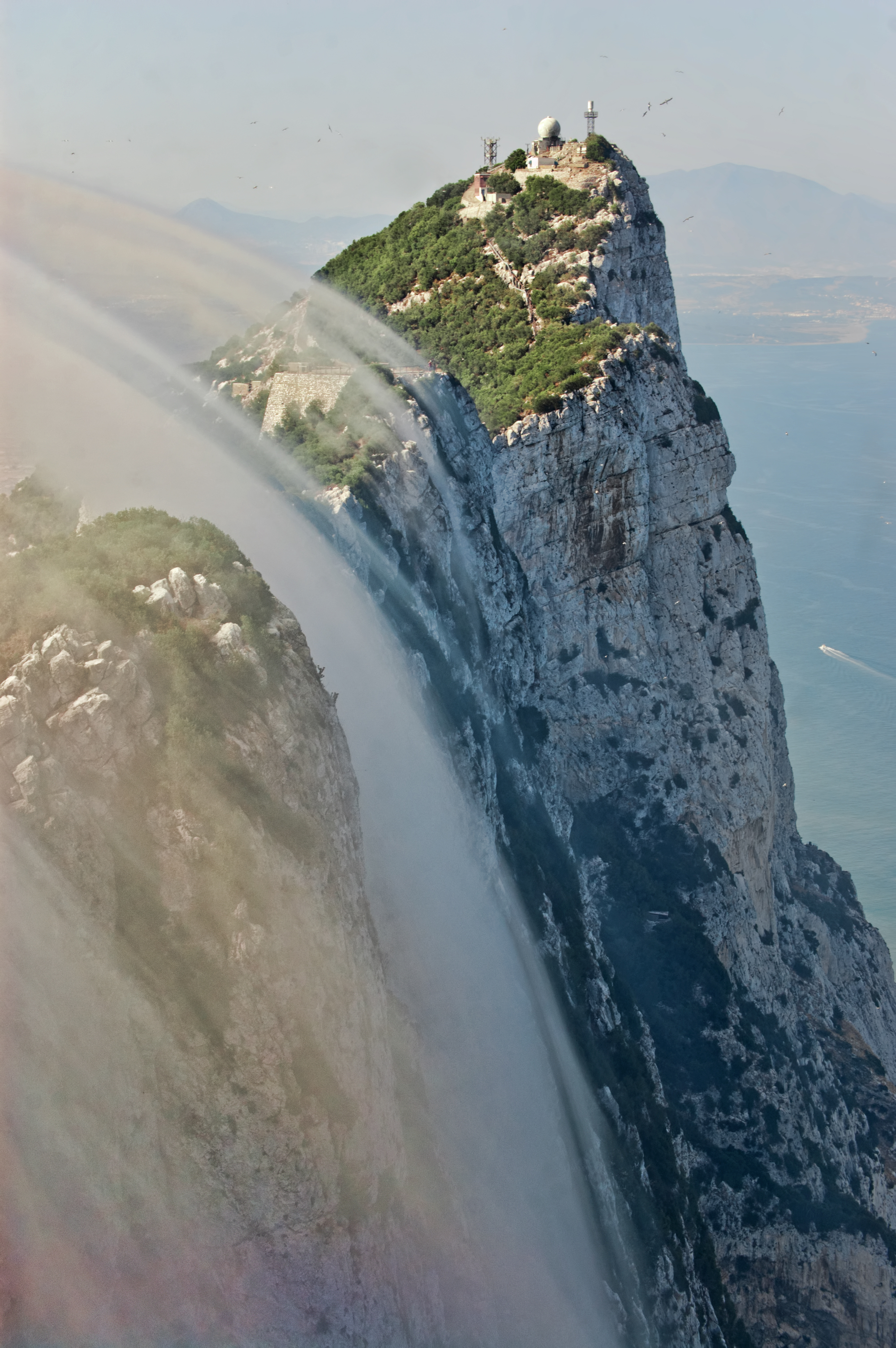|
Hanover Battery
Hanover Battery was an artillery battery on the north west part of the British Overseas Territory of Gibraltar. The battery is casemated. Beneath the battery was a tunnel known as Hanover Gallery. Description The battery was in use in the war with Spain in 1762 when there was two 24 pound guns mounted here. The ability of the battery to give cover to troops making their way to the Kings and Queens Lines was approved by the Chief Engineer William Green in 1770. The battery gives easy access to the Princess Lines and the Princes Lines which are above the Kings And Queens lines respectively. By 1859 the two guns at Hanover Battery were assisted by additional two carronades which were also 24-pounders. The 19th century photograph is by George Washington Wilson and it shows the battery looking north over the neutral ground that the batteries were built to fire upon (and where Gibraltar Airport will eventually be built). The battery was to the north of Queen Charlotte's Battery and t ... [...More Info...] [...Related Items...] OR: [Wikipedia] [Google] [Baidu] |
Fortifications Of Gibraltar
The Gibraltar peninsula, located at the far southern end of Iberia, has great strategic importance as a result of its position by the Strait of Gibraltar where the Mediterranean Sea meets the Atlantic Ocean. It has repeatedly been contested between European and North African powers and has endured fourteen sieges since it was first settled in the 11th century. The peninsula's occupants – Moors, Spanish, and British – have built successive layers of fortifications and defences including walls, bastions, casemates, gun batteries, magazines, tunnels and galleries. At their peak in 1865, the fortifications housed around 681 guns mounted in 110 batteries and positions, guarding all land and sea approaches to Gibraltar. Hughes & Migos, p. 91 The fortifications continued to be in military use until as late as the 1970s and by the time tunnelling ceased in the late 1960s, over of galleries had been dug in an area of only . Gibraltar's fortifications are clustered in three main a ... [...More Info...] [...Related Items...] OR: [Wikipedia] [Google] [Baidu] |
British Overseas Territories
The British Overseas Territories (BOTs), also known as the United Kingdom Overseas Territories (UKOTs), are fourteen dependent territory, territories with a constitutional and historical link with the United Kingdom. They are the last remnants of the former British Empire and do not form part of the United Kingdom itself. The permanently inhabited territories are internally Self-governance, self-governing, with the United Kingdom retaining responsibility for Defence (military), defence and foreign relations. Three of the territories are inhabited only by a transitory population of military or scientific personnel. All but one of the rest are listed by the Special Committee on Decolonization, UN Special Committee on Decolonization as United Nations list of non-self-governing territories, non-self-governing territories. All fourteen have the Monarchy of the United Kingdom, British monarch as head of state. three territories (the Falkland Islands, Gibraltar and the Akrotiri an ... [...More Info...] [...Related Items...] OR: [Wikipedia] [Google] [Baidu] |
Bomb Proof Battery
Bomb Proof Battery was an artillery battery near Bomb Proof Barracks in the British Overseas Territory of Gibraltar. The battery was located at the south end of the King's Lines on the north-west face of the Rock of Gibraltar. It comprised a casemated battery built on two levels, each of which had two embrasures built into the old Spanish defences constructed above the then Puerta de Villavieja some time in the 16th century. The battery was partly built over when the King's Lines Battery was constructed. It was recorded as housing one 18-pdr (8.1 kg) and one 4-pdr (1.8 kg) in 1781, two 18-pdrs and one 24-pdr (10.9 kg) carronade in 1834, two 24-pdrs in 1859 and two 12-pdrs (5.4 kg) in 1885. It was re-equipped during the Second World War World War II or the Second World War, often abbreviated as WWII or WW2, was a world war that lasted from 1939 to 1945. It involved the vast majority of the world's countries—including all of the great powers†... [...More Info...] [...Related Items...] OR: [Wikipedia] [Google] [Baidu] |
Couvreport Battery
Couvreport Battery is an artillery battery in the British Overseas Territory of Gibraltar. Description It was established in 1761 when the Couvre Port Work, covering Landport, was re-formed, and a battery for three guns was created. The work was commission by Major William Green which as based on the "first system" which had been devised by SĂ©bastien Le Prestre de Vauban in the 1680s. This battery was shaped like a ravelin as it was intended to divide any invading army. According to Fa and Finlayson, "a small defensive work asset immediately in front of a gate so as to screen it." Couvreport Battery is a Class A listed building as designated by the Government of Gibraltar His Majesty's Government of Gibraltar is the democratically elected government of the British Overseas Territory of Gibraltar. The head of state is King Charles III who is represented by the Governor. Elections in Gibraltar are held every four ...'s Gibraltar Heritage Trust Act of 1989. References ... [...More Info...] [...Related Items...] OR: [Wikipedia] [Google] [Baidu] |
Forbes' Battery
Forbes' Batteries are a pair of artillery batteries in the British Overseas Territory of Gibraltar. The batteries are casemated. Description The Forbes' Batteries are on the eastern end of the Northern Defences. These batteries had five guns arranged on two levels. There is a famous quarry behind the batteries which shares the same name. This complex group of fortifications is located at the end of Princes Lines and was named after Lt. George Forbes RN, ADC to Prince George of Hesse-Darmstadt Prince George Louis of Hessen-Darmstadt (1669 – 13 September 1705) was a Field Marshal in the Austrian army. He is known for his career in Habsburg Spain, as Viceroy of Catalonia (1698–1701), head of the Austrian army in the War of the Spani ..., third Earl of Granard (1685-1765) who took part as a midshipman in the attack of 1704 and who fought on shore in the siege of 1727. In 1727 the battery mounted two 6-pdr guns. In 1761 the British constructed Upper and Lower Forbes' Batte ... [...More Info...] [...Related Items...] OR: [Wikipedia] [Google] [Baidu] |
Rock Of Gibraltar
The Rock of Gibraltar (from the Arabic name Jabel-al-Tariq) is a monolithic limestone promontory located in the British territory of Gibraltar, near the southwestern tip of Europe on the Iberian Peninsula, and near the entrance to the Mediterranean. It is high. Most of the Rock's upper area is covered by a nature reserve, which is home to around 300 Barbary macaques. These macaques, as well as a labyrinthine network of tunnels, attract many tourists each year. The Rock of Gibraltar, one of the two traditional Pillars of Hercules, was known to the Romans as ''Mons Calpe'', the other pillar being ''Mons Abila'', either Monte Hacho or Jebel Musa on the African side of the Strait. According to ancient myths fostered by the Greeks and the Phoenicians, and later perpetuated by the Romans, the two points marked the limit to the known world, although the Phoenicians had actually sailed beyond this point into the Atlantic, both northward and southward. The Mediterranean Sea surroun ... [...More Info...] [...Related Items...] OR: [Wikipedia] [Google] [Baidu] |
Hanover Battery Magazine Jung0947
Hanover (; german: Hannover ; nds, Hannober) is the capital and largest city of the German state of Lower Saxony. Its 535,932 (2021) inhabitants make it the 13th-largest city in Germany as well as the fourth-largest city in Northern Germany after Berlin, Hamburg and Bremen. Hanover's urban area comprises the towns of Garbsen, Langenhagen and Laatzen and has a population of about 791,000 (2018). The Hanover Region has approximately 1.16 million inhabitants (2019). The city lies at the confluence of the River Leine and its tributary the Ihme, in the south of the North German Plain, and is the largest city in the Hannover–Braunschweig–Göttingen–Wolfsburg Metropolitan Region. It is the fifth-largest city in the Low German dialect area after Hamburg, Dortmund, Essen and Bremen. Before it became the capital of Lower Saxony in 1946, Hannover was the capital of the Principality of Calenberg (1636–1692), the Electorate of Hanover (1692–1814), the Kingdom of Hannover (1814†... [...More Info...] [...Related Items...] OR: [Wikipedia] [Google] [Baidu] |




.jpg)